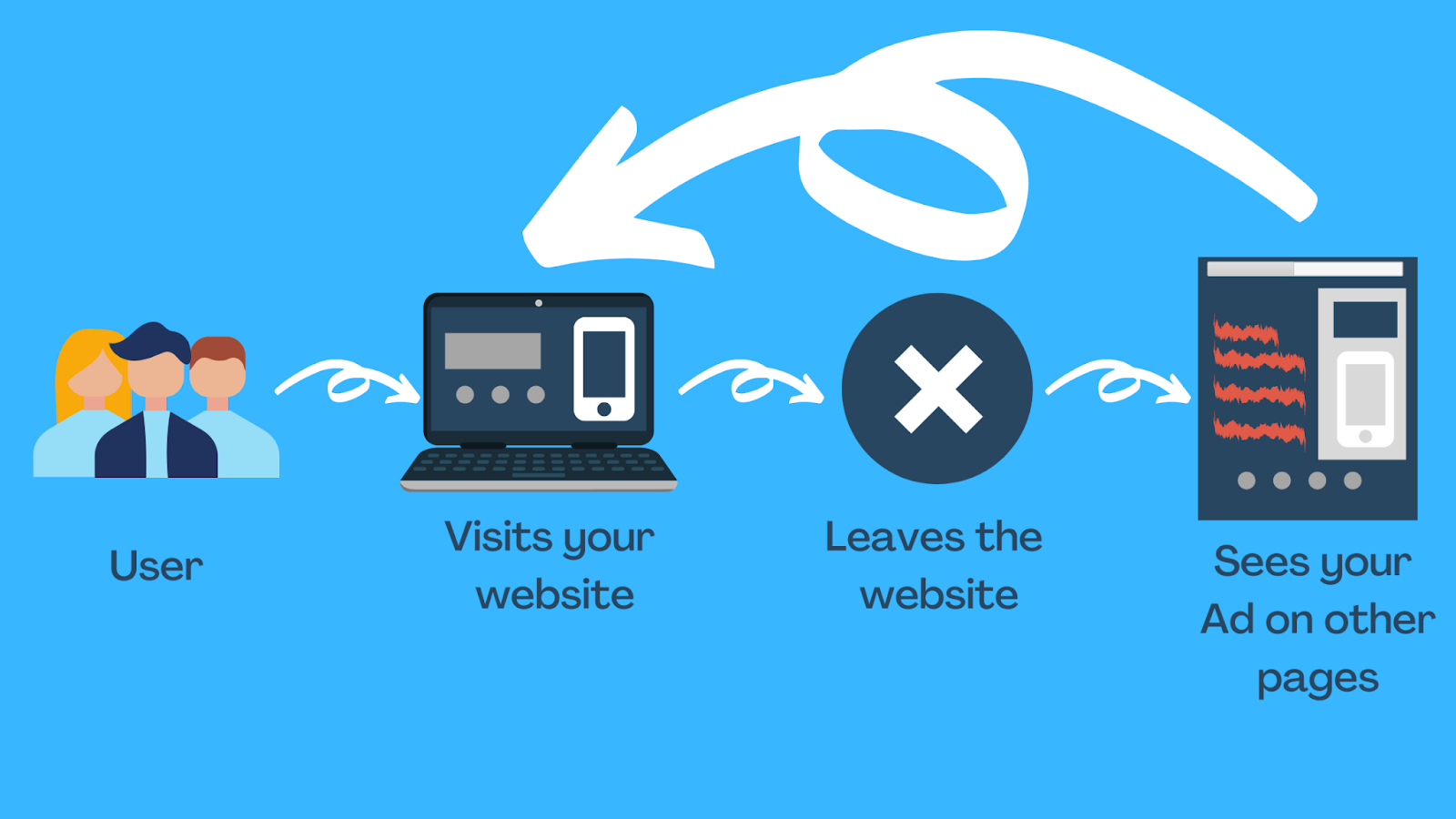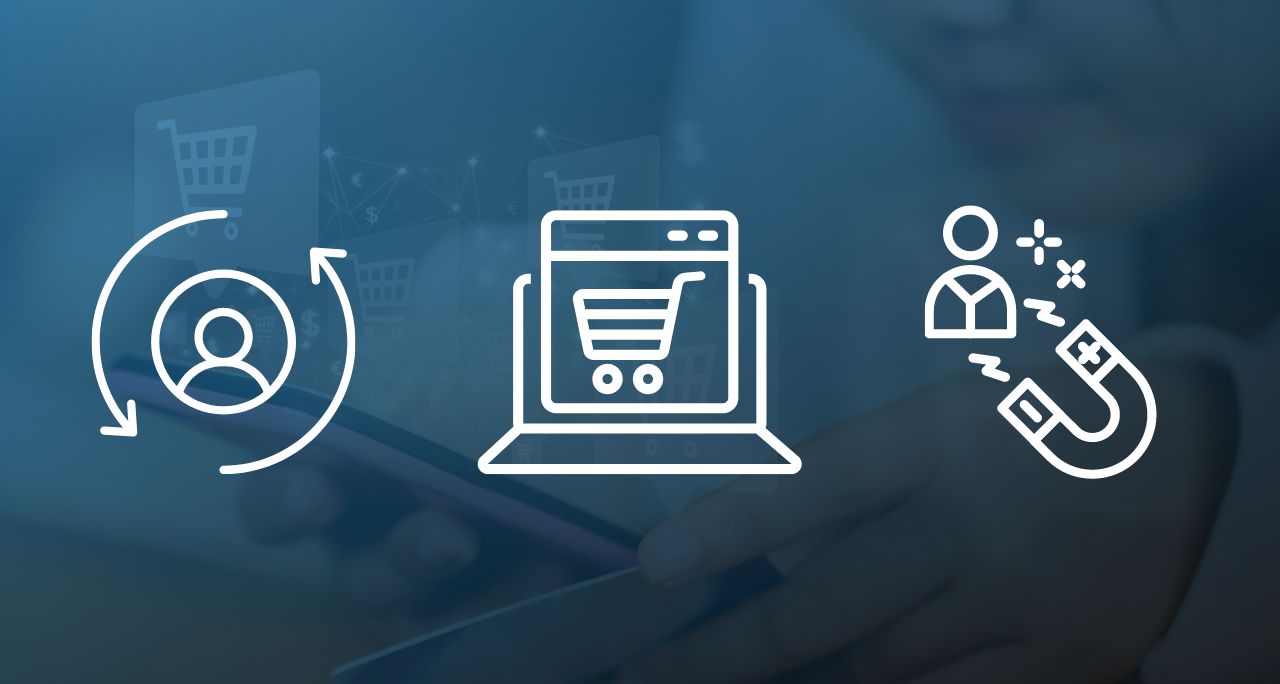Your website has become your baby. It’s the place where prospects learn about you, customers buy from you, and stakeholders stay in the know.
But there’s one thing your website hasn’t been so good at lately …
Converting visitors into long-term buyers.
But, honestly, you’re not the only digital goods eCommerce brand facing this challenge. In a world where the buying power is back in the customers’ hands, it takes creativity and strategy to create a site that stands out. Luckily, with a secret weapon (ahem … “retargeting”) you can make the most of your visitor activity and nurture prospects for as long as you plan on being in business.
Ready to learn how to engage prospects and customers using retargeting?
In today’s article, we’re taking a closer look at what retargeting means and how it works. We’re also sharing eight best eCommerce retargeting practices you can start implementing right away. Ready to learn more?
Let’s go!
What is retargeting and how does it work?
Retargeting is a marketing method brands use to stay present in front of bounced traffic. Think of it as a second chance, of sorts — well, actually, the number of chances doesn’t stop there. You can retarget visitors, three, four, five, or even infinite times (unless they reject cookies or opt-out of your lead list).
For instance, if a visitor adds a subscription plan to their shopping cart but abandons it before paying out, then you can retarget them with a discount to entice them to complete their purchase.
If they still don’t act, you can retarget them another time, and another, and another until they either become a customer — or until you’ve realized they’re not the best customer fit.
In summary, retargeting gives you additional touchpoint opportunities so you can continue nurturing leads into conversion — no matter where they are in the funnel.
Here’s how retargeting works
Retargeting typically focuses on retargeting audiences who’ve bounced from your site via paid ads. You can create retargeting campaigns to win back previous customers, convert leads who’ve shown interest, and warm up cold prospects. Use a platform like GrowthBar to plan retargeting content your audience is searching for.
But there’s a technical component to this, with two options you can choose from.
The first option is called: Pixel-based retargeting.
With pixel-based retargeting, you place an unobtrusive piece of JavaScript (a “pixel”) on a lead’s browser so it’s “cookie-d”. If they bounce from your site, the cookie will notify your retargeting platform to present ads to the prospect based on their website activity.
Gordon Meagher of Tailor Brands also says:
“You can retarget visitors to your site when they log in to their social media accounts. Download the code snippet from each social channel and embed it on your site (you should ask for help from a developer if you aren’t familiar with this stuff). You can then set up a retargeting ad campaign (those ads that follow you around the internet) for each social media channel you want to run ads on.
The visitors on your website will see the ads when they log back into their social media accounts.” Genius!
To take advantage of pixel-based retargeting, don’t forget to use a cookie consent tool to adhere to important privacy laws.
![]()
The second retargeting option is called: List-based retargeting.
List-based retargeting works only after you’ve cultivated a list of contact information. You upload this list of email addresses to your retargeting campaign, and your retargeting platform identifies them on any network to serve specifically-tailored ads.
While list-based retargeting isn’t as common as pixel-based, keeping an updated list of your customers is essential for any business exit strategy. This can increase your business’ valuation as it enables you to present future buyers with a list of contacts that are already familiar with your brand.
8 retargeting best practices for eCommerce brands
Now that we’re clear on what retargeting is and how it works, let’s take a look at eight retargeting best practices you can start implementing right away.
1. Conduct A/B testing to avoid wasting time and money on ads that don’t work
Running ad campaigns can suck even the most flexible budgets dry. But if you test and refine your campaigns, first, you can save yourself from putting out countless failed ad attempts.
Enter: A/B testing — a simple practice where you take an ad, change a variable, and then test the original version against the slightly varied version. Yes, say hello to a better ROI!

To conduct A/B testing as seamlessly as possible, leave the copywriting to a professional content writing service and invest in A/B testing tools.
When looking into a content writing service, look for a team that specializes in ad copy. When deciding which A/B testing tools to invest in, look for ones that have a solid support team that can sweep in to help if you encounter a challenge.
2. Choose ad channels your prospects frequent most often
While some businesses avidly tackle as many ad channels as they can get their hands on, it can be heavy on the purse strings if your audience simply isn’t there.
In other words, if your audience lives on Instagram and YouTube, stick to only presenting ads on those channels. While you might have a few stragglers perusing other channels, too, if the bulk of your audience isn’t there, publishing ads can lead to an unnecessary financial loss.
3. Boost ROI with pre-designed ad templates
And speaking of ROI, using free design templates and other online resources can help you quickly and inexpensively create an attention-grabbing ad.

Here are some other ways you can boost ROI when planning your retargeting strategies:
- Shop around for a retargeting platform that matches your budget
- Place a code snippet in your email campaigns to cookie every user on your email list
- Save money on ads by opting for automated emails when possible
4. Retarget based on interests
Has an ad ever followed you on Google or social media and you just knew you had to click “buy”?
The reason for that is simple. You were likely shown an ad for something you’ve shown interest in before.
Whether it was an audiobook you’d been eyeing as a birthday gift or whether it was a project management tool you’d been meaning to try, the ad was just the push you needed.
And that’s why retargeting based on interests is so effective.
For instance, if you sell memberships for satellite TV packages, start by identifying your audience segments and then use behavior heat maps to see what interests them. You can then reach out via automated direct messages, automated emails, or add them to an interest-based retargeting campaign.
Here’s another example.
HelloRache, a digital virtual assistant service company, has identified three distinct audience segments it caters to in the healthcare industry:
- Prospects interested in healthcare virtual assistants
- Prospects interested in virtual scribes
- Prospects interested in virtual receptionists
By creating segmented campaigns to cater to each audience’s interests, HelloRache presents prospects with the right message and the right offer, every time.
In other words, getting to know your individual audience segments and the unique interests they have is pivotal to creating retargeting campaigns that convert.
5. Retarget based on website activity
Another engaging way to retarget prospects is to use website activity.
Have you ever perused a particular page on a website and then later received ads or emails based on what you saw on that page?
That’s retargeting based on website activity at its finest.
And it works for two reasons:
- You’re retargeting based on time invested (there’s a reason prospects can’t stop looking at your WordPress themes)
- You’re retargeting based on action (prospects may have clicked on your software links, read your blog posts, or signed up for your email list)

Both of these reasons give you the perfect excuse to retarget since prospects have already invested time in your brand.
When retargeting based on website activity, get specific by segmenting leads by:
- How long they stayed on a particular page
- The action steps they took (or didn’t take) on a specific page
- The exact offers they looked at
- The pages they visited
- Forms they filled out
6. Retarget based on pain points
Finding out what makes your audience tick and then retargeting them based on pain points is a genius way to solve problems — aka the reason you’re in business.
Here are a few ways to find out what pain points your audience has:
- Survey prospects after they bounce from your site to ask why they left and what could’ve prompted them to stay longer
- Monitor prospect activity and buying habits
- Use a social listening tool to see what prospects are saying about you on social media
- Collect and analyze consumer behavior data
- Email your prospects and ask them what core pain points you can help solve
- Ask leads via social media posts and in Stories
Then, use retargeting campaigns with specific messaging so leads understand the pain points you’re solving.
For instance, let’s say prospects are having trouble finding a cybersecurity webinar that’s both educational and engaging.
In this case, be sure to highlight any insightful and captivating cybersecurity webinar options you have in your retargeting campaigns. Bonus points if you can pair social proof alongside it so prospects can read what other happy customers have to say about your webinars.
7. Retarget with a freemium model
A freemium model, made popular by the SaaS industry, is a strategy used to help prospects gain trust and insight into what it’s like to be one of your customers.
You essentially retarget bounced leads by offering them a free trial to a best-selling product, a free sample, or a free subscription for a limited time.
For instance, if you claim to sell some of the best website builders, you might offer a one-month free trial so prospects can test your platforms before committing to a subscription. Or, if you sell digital courses, you might let leads try your new course for 14 days before asking them to sign up for a monthly subscription.
8. Retarget abandoned checkouts
Possibly the easiest — and one of the most important — retargeting strategies is to retarget abandoned checkouts.
After a lead abandons their checkout, be sure to immediately add them to an automated email marketing series and a sequential cart abandonment ad campaign.
With each sequential ad or email, sweeten the pot a little more to entice them to check out with a discount or promo code.
Here’s an example:
- With ad or email number one: Offer a 5% discount code
- With ad or email number two: Offer a 10% discount code
- With ad or email number three: Offer a 10% discount code and a free item or service
- With ad or email number four: Offer a BOGO discount code
- With ad or email number five: Offer a BOGO discount code and an additional free item or service
If discounts and promo codes aren’t enough to win them over, then you may need to focus on nurturing an emotional connection first. You can do this by humanizing your copy, sharing your brand story, and building trust with user-generated content.
If all else fails, maybe it’s not the price or the connection that’s the issue, but rather the offer itself. You can survey prospects or take a closer look at their buying behavior to see what kind of offers they value and purchase most.
Wrap up
Retargeting is crucial to staying present in front of bounced traffic. From staying top-of-mind to taking advantage of low-hanging fruit, retargeting campaigns are the second, third, and fourth-plus chances you’ve been looking for.
Ready to boost engagement and build lasting customer relationships? We hope these retargeting best practices will help you win hearts and keep your customers for years to come.
For good measure, here’s a quick recap of the strategies we shared today:
- 1. Conduct A/B testing to avoid wasting time and money on ads that don’t work
- 2. Choose ad channels your prospects frequent most often
- 3. Boost ROI with pre-designed ad templates
- 4. Retarget based on interests
- 5. Retarget based on website activity
- 6. Retarget based on pain points
- 7. Retarget with a freemium model
- 8. Retarget abandoned checkouts
And that’s it for today. It’s time to go forth and retarget bounced leads!
About Author

Shane Barker is a digital marketing consultant who specializes in influencer marketing, content marketing, and SEO. He is also the co-founder and CEO of Content Solutions, a digital marketing agency. He has consulted with Fortune 500 companies, influencers with digital products, and a number of A-List celebrities.





